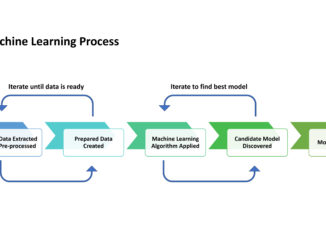And what the gaming industry can learn from batter up!
Q&A with Ari Kaplan, Sports Analytics
Even if you’re not a baseball fan, or maybe not even a data geek, most folks found the movie Moneyball fascinating. In the movie, Oakland A’s General Manager Billy Beane (Brad Pitt) challenges the system and defies conventional wisdom when he is forced to rebuild his small-market team on a limited budget, using data analytics in addition to scouts, and forever changes the way the game is played. Prior to 2002, baseball players were often misjudged by their market as people who were using their “gut,” not data. The movie is based on Michael Lewis’ best-selling book, Moneyball: The Art of Winning an Unfair Game. Sabermetrics changed the way that many major league front offices do business.
Nearly two decades later, data scientists have not only changed the game of baseball, but they are impacting how casinos are making decisions and courting their guests. And there’s yet another connection. With sports betting now legal, will more of our guests be demanding even more data?
Taking the stage this January at Raving NEXT: Indian Gaming Analytics and Marketing Conference at Pechanga Resort Casino in Southern California, is Ari Kaplan, a leading figure in sports analytics, having created the Chicago Cubs’ analytics department and having worked with over half of all MLB organizations and many global sports media organizations.
His baseball career spans 30 seasons, and Sports Illustrated named Ari a “Top Ten General Manager Candidate.” He received Caltech’s “Alumni of the Decade” distinction for pioneering groundbreaking sabermetrics used to evaluate pitcher talent.
You may have heard about the Chicago Cubs breaking a 108-year-old drought by winning the 2016 World Series? Kaplan was instrumental in establishing the team’s analytics department.
Without giving away too much of what Ari will be addressing to our audience in January, we wanted to share the connection between baseball analytics and casino analytics.
CF: Ari, I suppose we’d all be billionaires if we could predict the outcome of the game. With that having been said, do you believe that using data has changed the predictability of baseball? Do you ever say to yourself, “I knew the season would end up this way”?
AK: Data science has been through a huge leap in sports over the past several years, with new large and diverse sets of data tracking everything. That, combined with an influx of new skilled and creative people and new software solutions, makes predictions more precise.
I make predictions all the time – both what will happen within a game (deciding which pitcher to bring in for relief, or positioning the defense), a game as a whole (which team will win), and over a season (which players are forecast to perform the best and what is the variance). I never like to say “I knew a season would end up this way” because a season is dynamic with players getting injured and traded, but I always re-evaluate my models and approach after each year to see what I could have done differently to improve.
CF: What has been the biggest impact of sabermetrics for the gaming fan? And how about for the owners? I read in a Wall Street Journal article that “the embrace of data analytics to drive strategy has actually slowed down the pace of play.”
AK: For fans, whole new ways of watching the game have sprouted up, and the MLB At Bat application has provided one of the biggest impacts by integrating advanced analytics and visuals. Also, broadcasts now provide everything from heat maps of the strike zone to defensive shifts, and fans can follow along on websites with even deeper advanced analytics. Fantasy sports have benefited with more sophisticated and fun ways to place bets and predict team performance. Owners have benefited by reducing the risk of their investments in player payrolls, although the “playing field” is more equalized across teams now that everyone is in the know.
CF: Speaking of “pace of play” – research tells us that millennials are looking for a different product in entertainment across the board. We see it in the gaming industry – this generation is looking for more “action” and challenge than traditional slot machines currently offer. Although most casino operators understand that they still need to focus on Baby Boomers and Generation X, they are preparing for when millennials will have more money in their pockets.
As baseball has the oldest viewers in major sports, with 50% of its audience 55 or older, we’re in much of the same boat. How is MLB addressing this generation?
AK: MLB acknowledges the challenges of reaching and resonating with the younger generation, and the Commissioner is making this an appropriate priority. Challenges include games ending late into the night on school days, being able to watch games at home on large TVs in place of coming to the game, and the rising cost of attending in person at many stadiums. Solutions are being discussed to address these challenges, in addition to finding new revenue streams, such as legalizing gambling on games in person and online.
CF: With sports betting becoming available in more and more jurisdictions, how will data analytics play into this expanded role of gaming? Do you see guests demanding more information from data scientists like yourself?
AK: Absolutely. The demand is growing. In all forms of gaming, having more data, having more types of data, and having more ways to model that data almost always leads to better predictions. Better predictions lead to winning. The race is on to get the best forecasts, and as close to real-time as possible.
Thanks, Ari, for your “teaser” of what you’ll be talking about at Raving NEXT: Indian Gaming Analytics and Marketing Conference at Pechanga Resort Casino in Southern California, January 28-30, 2019. For more information on Ari and our other speakers at the conference, please visit www.ravingnext.com.




